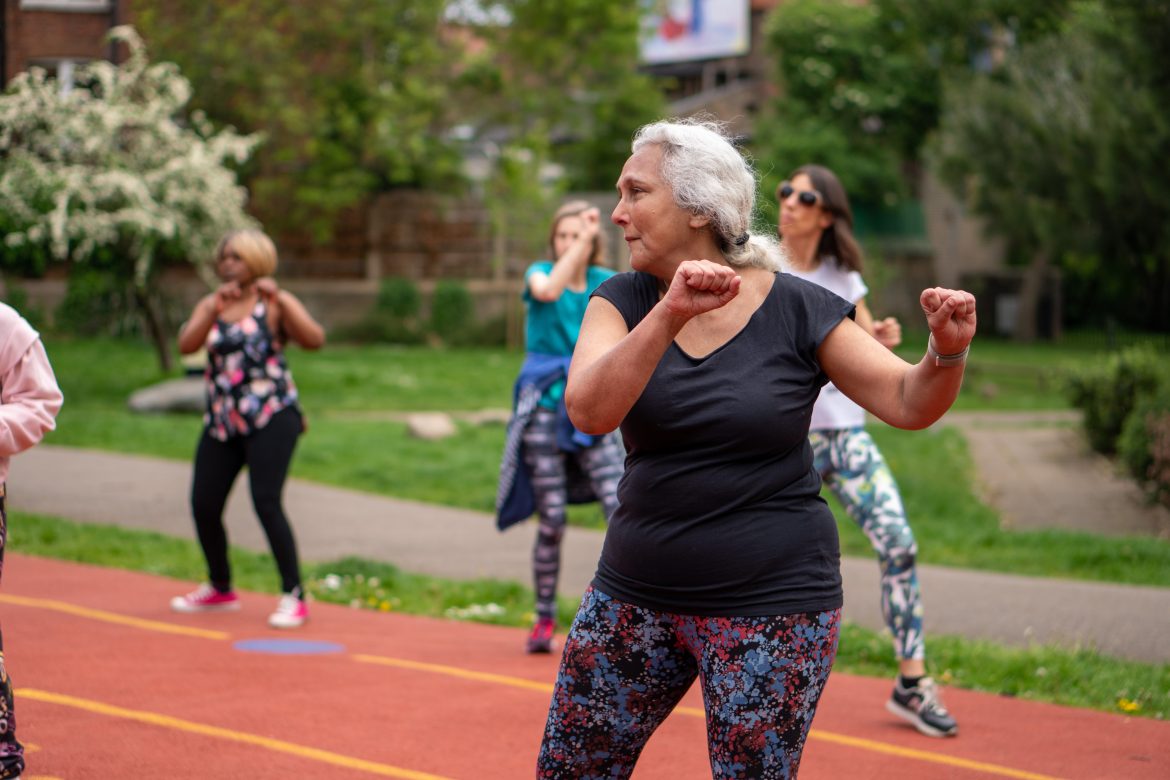Fitness is not merely an activity; it’s a crucial aspect of a healthy lifestyle that is significant for all age groups. It represents a commitment to health and vitality that persists throughout one’s life. The concept of “Fitness Benefits at Any Age” emphasizes the continuous value of maintaining an active lifestyle. It is applicable and beneficial for individuals at every stage of life, from young beginners to older adults.
The idea of ‘Fitness Benefits at Any Age’ encapsulates the universal need for well-being. Regardless of whether you are new to fitness or have been engaged in physical activities for a long time, the health benefits of staying active are significant and far-reaching at every life stage. The primary focus is on ‘Beginner Fitness Tips’, ‘Age-Appropriate Exercises’, understanding the ‘Health Benefits of Fitness’, ‘Starting Your Fitness Journey’, and incorporating ‘Fitness Techniques for All Ages’. This ensures a comprehensive approach to fitness that is inclusive and effective for all individuals.
“Did you know? Regular physical activity can reduce the risk of chronic diseases at any age, enhancing both physical and mental health.”
This statistic emphasizes the extensive benefits of physical activity. The scope of fitness is extensive, inviting individuals of all ages to partake in its numerous benefits. The journey of fitness is dynamic, adjusting and evolving to meet your personal needs and lifestyle. This article providing insights and strategies that are relevant to your age, aspirations, and lifestyle.
The journey of fitness encompasses various stages of life, each with its unique fitness needs and opportunities:
- Understanding Fitness at Any Age: This section focuses on the essential principles of fitness and how they can be adapted for different age groups.
- Benefits of Starting Fitness Early: This section discusses the significant impact of establishing fitness habits early in life and the long-term benefits associated with it.
- Maintaining Fitness in Midlife: This section offers strategies for maintaining and adapting fitness routines during midlife, emphasizing overall health and age-specific requirements.
- Fitness for Seniors: Safe & Effective Approaches: This section presents safe and effective fitness strategies for seniors, aimed at enhancing quality of life, mobility, and independence.
- Technology and Fitness: Aiding All Ages: This section highlights the relationship between technology and fitness, showcasing digital tools and platforms that support fitness journeys for individuals of all ages.
In navigating through these sections, we explore the wide-ranging benefits of fitness and understand how fitness acts as a supportive element throughout different stages of life. This guide, filled with insights and practical strategies, is more than just an article; it is a comprehensive source of information that highlights the enduring relationship between fitness and well-being. It is a tribute to the human spirit that continually seeks vitality at every stage of life.
Learn how you can customize your fitness regime to suit your age, lifestyle, and objectives, ensuring a healthier and happier life at any age. Welcome to “Fitness Benefits at Any Age,” where each step you take is a step towards a better, healthier you.
Understanding Fitness at Any Age
Age-specific fitness guidelines are critical for ensuring that individuals participate in safe and effective exercise routines suitable for their age group. These guidelines cater to the varying physical and developmental needs across different life stages. For children and adolescents, focus is on growth, cardiovascular health, and flexibility. Adults should maintain a balanced routine including aerobic, strength, flexibility, and balance exercises. Midlife adjustments in exercise intensity and type can help adapt to changing physical capabilities and health conditions. For seniors, emphasis is on maintaining mobility, strength, and independence, focusing on balance, flexibility, and muscle-strengthening exercises.
Studies show that engaging in age-appropriate physical activities can improve lifespan and quality of life significantly.
Overcoming Age-Related Fitness Barriers
Addressing fitness barriers is crucial for a consistent and effective fitness routine. Challenges like physical limitations, time constraints, or psychological barriers such as low motivation or fear of injury can impede regular exercise. Targeted strategies can help overcome these barriers. For children and adolescents, introducing fun and varied activities can combat boredom. Adults can integrate fitness into their busy schedules by making it a priority. For older adults, low-impact exercises and a focus on balance and flexibility can address concerns about injury and physical limitations.
| Age Group | Common Barriers | Strategies to Overcome |
|---|---|---|
| Children & Teens | Boredom, Lack of Interest | Introduce fun, varied activities |
| Adults | Busy Schedules, Responsibilities | Prioritize fitness, integrate into daily routine |
| Seniors | Fear of Injury, Physical Limitations | Low-impact exercises, focus on balance and flexibility |
Lifelong Benefits of Regular Exercise
The benefits of regular exercise extend beyond physical improvements, affecting mental and emotional well-being. Engaging in regular physical activity helps in managing weight, reducing the risk of chronic diseases, improving mental health, and enhancing sleep quality. For children and adolescents, it supports healthy growth and development. For adults, it maintains health and prevents age-related conditions. For seniors, it’s vital for preserving mobility, independence, and quality of life. The benefits of regular exercise offer rewards at every age.
Benefits of Starting Fitness Early
Starting fitness routines early in life is crucial for developing a healthy lifestyle. Regular physical activity during childhood and adolescence is foundational for a balanced routine in later life, including aerobic, strength, flexibility, and balance exercises. This early activity contributes to improved bone density, muscle strength, and reduces the risk of chronic diseases, making it vital for establishing a lifelong healthy lifestyle.
Early Habits, Lifelong Rewards
Forming fitness habits early in life brings extensive benefits for physical and mental well-being. Regular physical activity in the early years enhances focus, mood, and self-esteem, contributing to a balanced and fulfilling life. Continuation of these habits into adulthood significantly reduces the risk of health issues, acting as a preventive measure against chronic diseases.
Engaging in regular physical activity during childhood is associated with a 35% lower risk of coronary heart disease in adulthood.
Fitness and Development in Younger Years
Physical activity is crucial for the growth and development of children and adolescents. Engaging in age-appropriate exercises aids in the development of motor skills, coordination, and physical literacy, fundamental for a child’s growth. Additionally, the social and emotional benefits of physical activities, such as enhanced communication and teamwork from team sports or group exercises, are invaluable.
- Motor Skills Development: Activities improving coordination, balance, and agility.
- Social Skills Enhancement: Participation in team sports or group activities for communication and teamwork development.
- Emotional Well-being: Activities supporting self-esteem, discipline, and stress relief.
Maintaining Fitness in Midlife
In midlife, it’s necessary to adjust fitness routines to accommodate age-related physiological changes. Incorporating a balanced mix of cardiovascular, strength, flexibility, and balance training is essential. Focusing on exercises that support joint health, increase bone density, and maintain muscle mass ensures the continuation of a beneficial and active lifestyle during midlife.
Midlife Fitness and Mental Health
Physical fitness significantly impacts mental and emotional well-being during midlife. Regular physical activity reduces stress, enhances mood, and supports overall mental health. It acts as a natural mood enhancer and contributes to self-esteem and social interaction, crucial for a positive mental state during this period.
Regular physical activity can decrease the risk of depression in adults by up to 30%.
Preventing Age-Related Health Decline
Regular exercise is vital in preventing age-related health issues such as heart disease, hypertension, diabetes, osteoporosis, and cognitive decline. It supports cardiovascular health, aids in blood pressure and glucose regulation, enhances bone density, and maintains cognitive function, promoting independence, mobility, and quality of life.
| Health Condition | Benefit of Regular Exercise |
|---|---|
| Heart Disease | Improves cardiovascular health, reduces risk |
| Hypertension | Helps in maintaining optimal blood pressure |
| Diabetes | Aids in glucose regulation, reduces risk |
| Osteoporosis | Increases bone density, prevents bone loss |
| Cognitive Decline | Supports cognitive function, reduces risk |
Fitness for Seniors: Safe & Effective Approaches
Developing exercise routines specifically for seniors is crucial to ensure they are both beneficial and safe. Activities such as strength training, gentle yoga, water aerobics, and walking are recommended to maintain muscle mass, bone density, and joint flexibility, thereby supporting overall well-being and daily functionality.
Balancing Fitness with Safety
Ensuring safety during exercise is paramount for seniors due to the heightened risk of injury. It involves selecting appropriate exercises, using the right equipment, understanding personal physical limitations, and possibly consulting with health professionals to create a customized exercise plan. This careful approach allows seniors to safely enjoy the benefits of physical activity.
Regular exercise can improve senior citizens’ balance and flexibility by up to 30%, significantly reducing the risk of falls.
- Proper Exercise Selection: Choosing low-impact, senior-appropriate activities.
- Equipment Use and Safety: Ensuring safe and proper use of exercise equipment.
- Physical Limitation Awareness: Acknowledging and respecting individual physical capabilities.
Enhancing Mobility and Independence
Physical activity is essential for seniors to maintain and enhance mobility and independence. Exercises focusing on balance, strength, and flexibility are particularly beneficial, supporting functional abilities, cognitive health, and overall quality of life. Regular physical activity enables seniors to live more autonomously and actively.
Technology and Fitness: Aiding All Ages
Fitness apps and online resources revolutionize access to fitness guidance and tracking, providing workout instructions, personalized exercise routines, dietary advice, and progress monitoring. They serve a diverse audience, enabling personalized fitness experiences through advanced technologies like AI and machine learning.
Wearable Technology for Monitoring Progress
Wearable technology is crucial in tracking health and fitness data. Devices such as fitness trackers and smartwatches offer insights into physical activity, heart rate, and sleep quality, empowering users to make informed health decisions. This data supports setting realistic goals and monitoring fitness progress efficiently.
Over 75% of users believe that wearable technology has enhanced their health and fitness.
Virtual Fitness Communities and Support
Virtual fitness communities offer platforms for connection, motivation, and support. Users can interact, share their fitness journeys, participate in challenges, and receive guidance from experts. These online spaces foster a supportive and motivating environment, beneficial for those preferring the flexibility of online interaction.
- Shared Journeys: Users share fitness progress and achievements.
- Expert Guidance: Access to professional advice and personalized coaching.
- Motivation and Accountability: Engaging in community challenges and receiving support.
Conclusion: Fitness0.com: Fitness Benefits at Any Age
This guide has offered detailed insights and strategies across various life stages, ensuring fitness routines are tailored to individual needs. It emphasizes the importance of understanding personal health requirements and customizing fitness plans to maximize the benefits of physical activity at every age.
Key Takeaways from Each Subtopic
Starting fitness early sets a strong foundation for long-term health, adapting fitness goals during midlife addresses changing health conditions, and tailored exercises for seniors ensure safe and effective routines. The role of technology in fitness enhances accessibility, personalization, and community support for individuals of all ages.
Take the first step towards a healthier, more fulfilling life. Embrace the fitness strategies tailored for your age, leverage the latest technology, and become part of a community that cheers for your every milestone!
- Understanding and Adapting Fitness Routines: Essential across all ages for optimal benefits.
- Initiating Fitness Early: Contributes significantly to long-term health and lifestyle.
- Maintaining Fitness During Midlife: Involves adapting to changing physical and mental health needs.
- Safe and Effective Exercise for Seniors: Maintains mobility and independence.
- Technology’s Role in Fitness: Enhances accessibility, personalization, and community support.
Fitness is a personal journey, uniquely shaped by each individual’s life stage and circumstances. With the insights from this guide, individuals can confidently navigate their fitness journey, knowing each step towards health and well-being is meaningful. This guide serves as a resource for anyone looking to enhance their fitness, providing comprehensive support at any age.
Citations:
- 10 Benefits of Exercise at Any Age, Vacayou
- Benefits of Strength Training for All Ages, Vitality Health Club
- The Top 10 Benefits of Regular Exercise, Healthline


